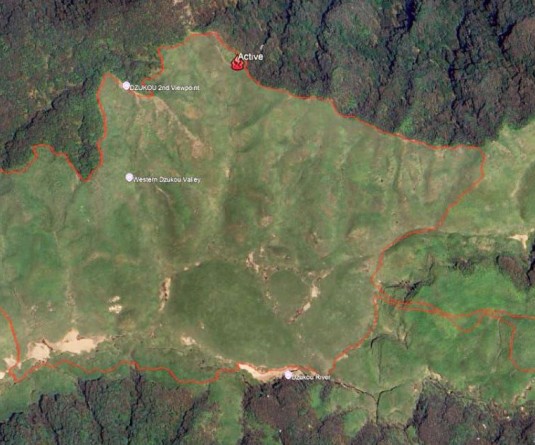
DIMAPUR, JULY 30 (MExN): A highly ravenous breed of locusts has been observed in Dimapur sending alarm bells ringing among agriculture researchers here. Swarms of ‘Aularches miliaris’, of the family ‘pyrgomorphidae’ in the order orthoptera, commonly known as spotted locusts, has been found feeding on plantations in the upper reaches of the district beyond Medziphema. Previously unheard of in the region, these swarms of voracious crop-eating grasshoppers, though vibrantly arresting in appearance, can destroy vast farmlands and plantations in a short duration of time if not controlled.
Worried agriculture officials of the district on Monday, showed to the media, specimens of the locusts caught at a cashew plantation falling between Piphema and Pherima. What is even more worrying is that there is not much literature on the habits and habitats of the pests - more importantly on controlling its spread. And, not helped by the fact that these thumb-sized locusts are uneatable. The species however is not new to mankind. The degree of damage the spotted locusts can cause on crops was first recorded back in 1925 in Sri Lanka (then Ceylon). Migratory in nature, the pests are observed to appear in warm climes in the tropical and sub-tropical regions.
An entomologist of the District Agriculture Office, Dimapur said the department was informed of the ‘unusual grasshoppers’ appearing in swarms by farmers a few days back. Quoting the observation of the farmers, the researcher said that the pests were first noticed in the area about three years back growing in number with each passing year.
It is known to feed on not less than 80 plant species, including those consumed by humans. It does not even spare coconut, plantain and areca plants. Clueless on the possible origin of the pests, the researcher was at best able to surmise that it might have migrated here as “Locusts are known to migrate over long distances” in the quest for food. It is a known pest in coastal south India but unheard of in this part of the country.
The little information that is found of the pests is that, it appears during March-April, feeding throughout the year, while mating and laying eggs for the next wave before the adults die out.
The known life-cycle of the spotted locust is around 13-15 months. The life span of other locust species are not more than 3-4 months, added the entomologist. One striking characteristic of the species is its defence mechanism, which wards off natural predators and even humans. It produces a “froth-like substance from the ‘thorax’ region, which emits a pungent smell, whenever threatened.”
The history of the species aside, the district agriculture office conceded it is not prepared to deal with this kind of pests as it is new to the region. BHC or benzene hexachloride is the recommended pesticide to kill off the insects but the problem is that the highly toxic chemical is banned in India. There is no known environment-friendly technique to control the pests, aside from using detergent-based substances, which is a tedious process requiring hours and hours of observation before actual application.





